Ross, Donald Alexander
Killed in Action 1945-03-05
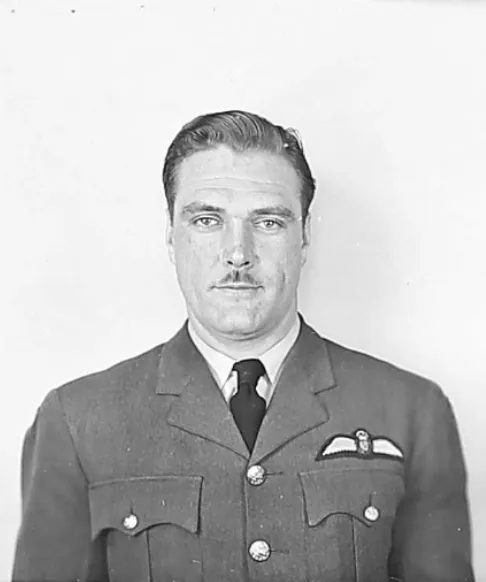

Birth Date: 1915-December-12
Born: Toronto, Ontario
Bruce Dow Ross & Elsie Mary Virgo
Home: Toronto, Ontario
Enlistment: Toronto, Ontario
Enlistment Date: 1940-06-22
Service
RCAF
Unit
424 (B) Sqn- Squadron
Castigandos Castigamus Chastise those deserving
Base
RAF Skipton-on-Swale
Rank
Flight Lieutenant
Position
Flight Lieutenant
Service Numbers
J/8165
Home
 Toronto, Ontario
Toronto, Ontario
Target
 Chemnitz Germany
Chemnitz Germany
First Burial
 Runnymede War Memorial Egham Surrey
Runnymede War Memorial Egham Surrey
Took off from Skipton-on-Swale at 16:42 in Lancaster Mk I Sqn code QB-H Bomber Command) on an operation to Chemnitz Germany.
Of the six who were killed four have no known graves while Flying Officer Seaby and Pilot Officer Atchison are buried in the Berlin 1939-45 War Cemetery.
Killed:Pilot Officer John Melford Atchison RCAF J/95411 KIA Berlin 1939-1945 War Cemetery Collective grave 13. A. 5-7.Flying Officer Alfred Valentine Cash RCAF J/38805 KIA Runnymede Memorial Panel 278.Sergeant Albert Kemp Rayner RAF KIA Runnymede Memorial Panel 276.F/Lt Donald Alexander Ross RCAF J/8165 KIA Runnymede Memorial Panel 278.Flying Officer Francis Edward Seaby RCAF J/36516 KIA Berlin 1939-1945 War Cemetery Coll. grave 13. A. 5-7.Flying Officer Howard Mcelroy Weaver RCAF J/40482 KIA Runnymede Memorial Panel 280.
POWs:Flight Sergeant Casimir Antonek RCAF R/211375 POW camp not listed.
Lancaster Mk.I NG458
Bombing Chemnitz Germany 1945-March-05 to 1945-March-05
433 (B) Sqn (RCAF) Skipton-on-Swale
Thunderclap
760 aircraft - 498 Lancasters, 256 Halifaxes, 6 Mosquitoes - to continue Operation Thunderclap. The operation started badly when 9 aircraft of 6 Group crashed near their bases soon after taking off in icy conditions. 426 Squadron, at Linton-on-Ousc, lost 3 out of their 14 Halifaxes taking part in the raid in this way, with only I man surviving. 1 of the Halifaxes crashed in York, killing some civilians. 22 further aircraft were lost in the main operation - 14 Lancasters and 8 I·Ialifaxes
The city of Karl-Marx-Stadt was unable to supply any local details but it Is known that the centre and the south of the city suffered severe fire damage. Several important factories were situated in the fire area and the Siegmar factory, which made tank engines, was destroyed.
source: The Bomber Command War Diaries, Martin Middlebrook and Chris Everitt
Lancaster BI aircraft NG 458 QB-H failed to return from night operations over Chemnitz, Germany. It is believed that the Lancaster crashed and exploded after a mid-air collision with an escorting fighter
On 1945-03-06, Squadron Leader A. Ross Dawson, the Chief Technical Officer with 424/433 Sqns at Skipton on Swale, wrote in his diary:
Chemnitz was the target last night & unfortunately we lost Flight Lieutenant Don Ross in "H" of 424. It sure is too bad since he was a swell guy & of course went though Riverdale Collegiate with me at home."
Flying Officer FE Seaby (RCAF) and Sergeant AK Rayner (RAFVR) were killed in action and are buried in Germany
Flying Officer HM Weaver (RCAF), Flying Officer AV Cash (RCAF)(USA), Flight Lieutenant DA Ross (RCAF) and Pilot Officer JM Atchison (RCAF) were missing, presumed killed in action. These aircrew have no known grave and are commemorated on the Runnymede War Memorial
FS CJ Antonek was the sole survivor of his crew and was taken Prisoner of War
Book- The Mystery of Frankenberg's Canadian Airman by Peter Hessel RAF losses 5./6. March 1945 [Archive] - Luftwaffe and Allied Air...
RAF losses 5./6. March 1945 [Archive] - Luftwaffe and Allied Air...
Lancaster NG458
Avro Lancaster

Canadian Warplane Heritage Museum
The Avro Lancaster is a British Second World War heavy bomber. It was designed and manufactured by Avro as a contemporary of the Handley Page Halifax, both bombers having been developed to the same specification, as well as the Short Stirling, all three aircraft being four-engined heavy bombers adopted by the Royal Air Force (RAF) during the same wartime era.
The Lancaster has its origins in the twin-engine Avro Manchester which had been developed during the late 1930s in response to the Air Ministry Specification P.13/36 for a capable medium bomber for "world-wide use". Originally developed as an evolution of the Manchester (which had proved troublesome in service and was retired in 1942), the Lancaster was designed by Roy Chadwick and powered by four Rolls-Royce Merlins and in one version, Bristol Hercules engines. It first saw service with RAF Bomber Command in 1942 and as the strategic bombing offensive over Europe gathered momentum, it was the main aircraft for the night-time bombing campaigns that followed. As increasing numbers of the type were produced, it became the principal heavy bomber used by the RAF, the Royal Canadian Air Force (RCAF) and squadrons from other Commonwealth and European countries serving within the RAF, overshadowing the Halifax and Stirling. Wikipedia
424 (B) Sqn Castigandos Castigamus ("Tiger")
History of the Squadron during World War II (Aircraft: Wellington III, X, Halifax III, Lancaster I, III)
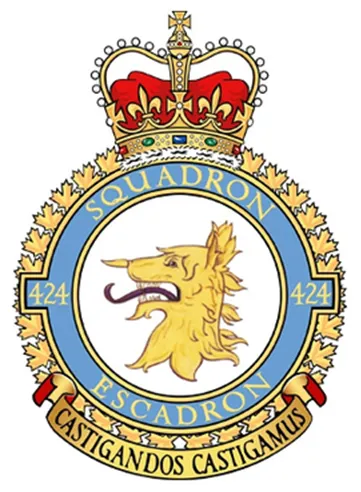
424 Squadron was the sixth RCAF bomber squadron to be formed overseas in WWII, at Topcliffe, Yorkshire, UK on October 15, 1942, originally as part of No 4 Group of RAF Bomber Command. It remained at Topcliffe when it was transferred to the newly-formed 6 (RCAF) Group on January 1, 1943. It moved to Leeming, Yorkshire , and then Dalton, Yorkshire , flying Vickers Wellington Mk III and X aircraft before being dispatched on June 22, 1943 to No 331 (RCAF) Wing of No 205 Group in Tunisia (Kairouan/Zina and Hani East airfields), from where it flew in support of the invasions of Sicily and Italy. It returned by sea to Skipton-on-Swale, Yorkshire in October/November 1943. It re-equipped with Handley Page Halifax Mk III aircraft, which it flew until January 1945, when it re-equipped with Avro Lancaster I and III aircraft. After the termination of hostilities in Europe, the squadron was transferred to No 1 Group, and was employed in operation DODGE, the repatriation of British and Canadian troops from Italy. It was disbanded at Skipton on October 15, 1945, 3 years to the day since its formation.
In the course of hostilities, the squadron flew 3257 sorties for the loss of 52 aircraft. 8776 tons of bombs were dropped. Crew members were awarded 1 DSO, 49 DFC's and 1 Bar to DFC, 1 CGM, 11 DFM's and 1 MiD. Battle Honours were: English Channel and North Sea 1943-45, Baltic 1944-45, Fortress Europe 1943-44, France and Germany 1944-45, Biscay Ports 1943-44, Ruhr 1943-45, Berlin 1944, German Ports 1943-45, Nornamdy 1944, Rhine, Bisacy 1943-44, Sicily 1943, Italy 1943, Salerno.Wikipedia, Kostenuk and Griffin
Squadron History (Bomber Command Museum PDF)
Maps for Movements of 424 Squadron 1942-45
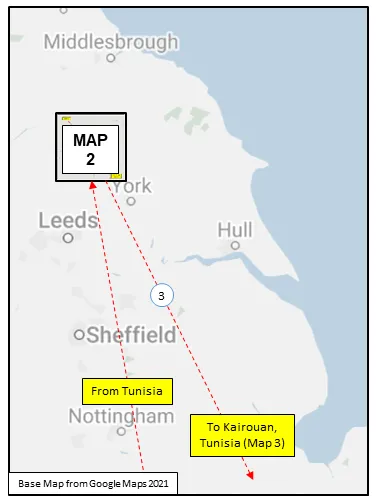 MAP 1: 424 Squadron Movements 1942-45 (right-click on image to display enlarged in new tab) | 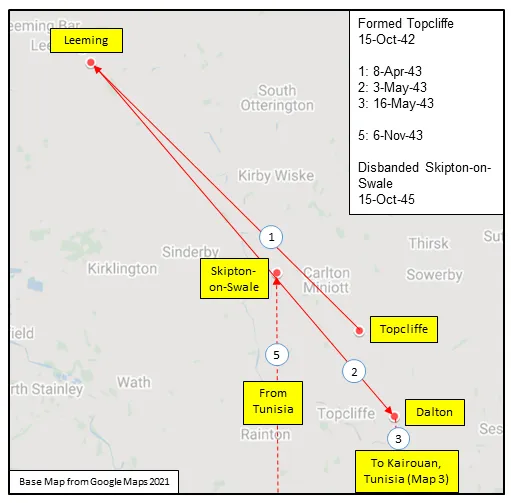 MAP 2: 424 Squadron Movements 1942-45 (detail of Map 1) | 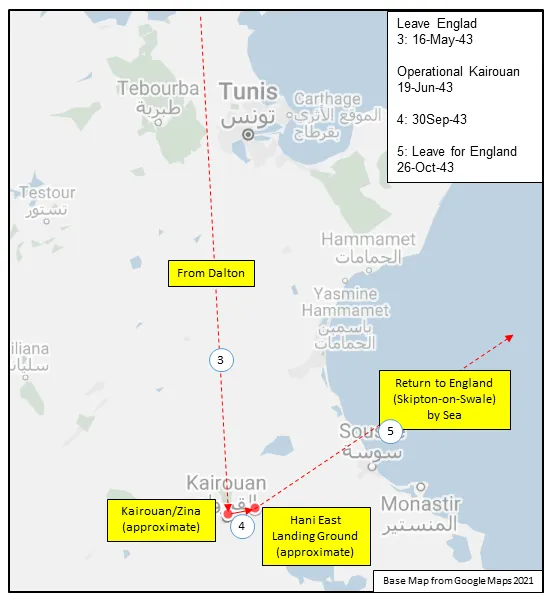 MAP 3: 424 Squadron Movements in North Africa 1943 |
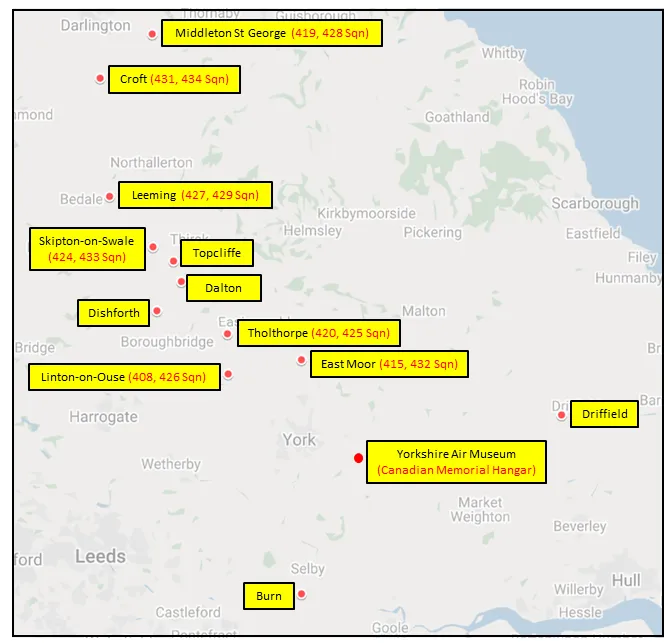
424 Squadron History Summary 1942-45
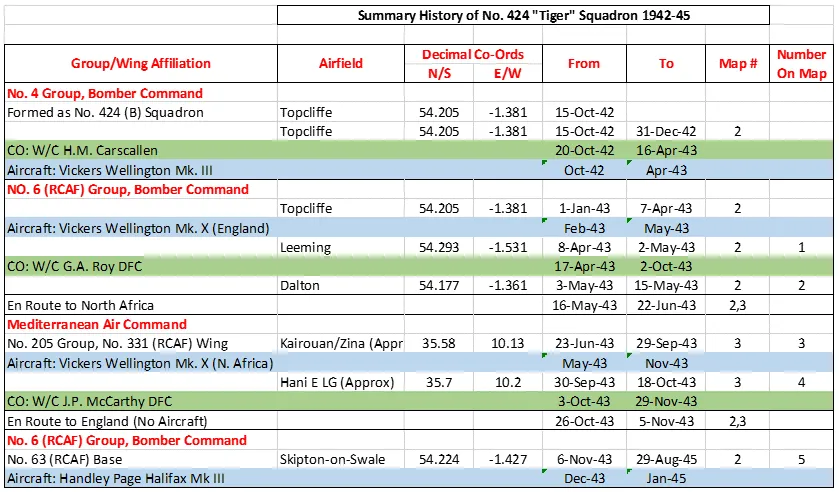
424 Squadron History Summary 1942-45 Page 2

History of the Squadron Post-WWII (Aircraft: Harvard II, Mustang IV, Silver Star 3, Expeditor, Otter, Griffon, Hercules)
The squadron was re-formed at Mount Hope, Hamilton, Ontario on 15 April 1946, as a light bomber unit. It was redesignated as an auxiliary fighter unit on 1 April 1947. It flew North American Harvard II and Mustang IV aircraft in a fighter role, as well as Canadair Silver Star aircraft until 1 September 1957 when it was then reassigned as a light transport and emergency rescue role and re-equipped with Beechcraft Expeditor and de Havilland Otter aircraft. On 21 October 1961 the unit received its Squadron Standard for 25 years’ service as No. 119 and 424 Squadron. A reduction of the Auxiliary Force resulted in the squadron being disbanded on 1 April 1964. On 8 July 1968, with unification of the Canadian Forces, the squadron was reactivated as 424 Communications and Transport Squadron, operating from CFB Trenton, Ontario . The squadron has flown more than 14 different types of aircraft during its history.
424 (Tiger) Squadron is now a Transport and Rescue Squadron based at 8 Wing Trenton. To fulfil its roles, 424 Squadron operates the CH-146 Griffon helicopter and the CC-130H Hercules. 424 Squadron and 435 Transport and Rescue Squadron provide primary search and rescue response for the Trenton Search and Rescue Region (SRR), the largest in Canada. The Trenton SRR extends from Quebec to the British Columbia/Alberta border, and from the Canada/United States border to the North Pole. The Squadron crews one aircraft of each type on standby response posture in order to respond to distress cases as tasked by Joint Rescue Coordination Centre Trenton.
In addition to providing SAR response through a para-rescue capability, the CC-130H Hercules allows the squadron to conduct its transport role in Canada and around the world. The CH-146 Griffon enables rescues and medical evacuations from locations on land and over water. Both aircraft carry Search and Rescue Technicians onboard in order to provide urgent care to those in need. The members of 424 Squadron provide SAR response to incidents under the federal SAR mandate; all aircraft incidents and all marine incidents in waters under federal jurisdiction. They also support humanitarian missions and other SAR organizations when able. Wikipedia and www.canada.ca/en/air-force/corporate/squadrons/424-squadron.html
 Canadian Virtual War Memorial
Canadian Virtual War Memorial Diary of A Ross Dawson, courtesy CWM
Diary of A Ross Dawson, courtesy CWM

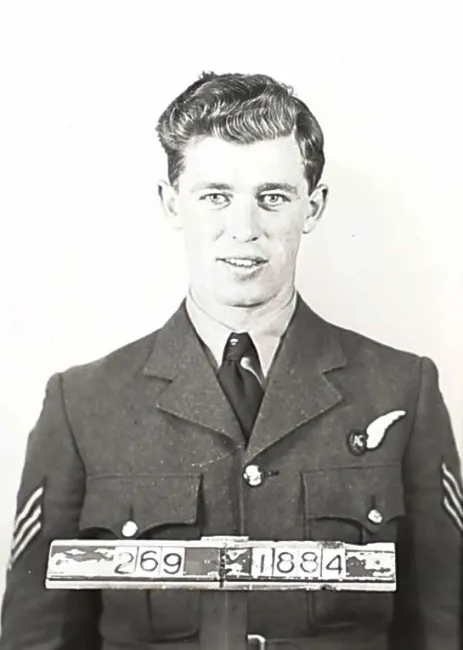
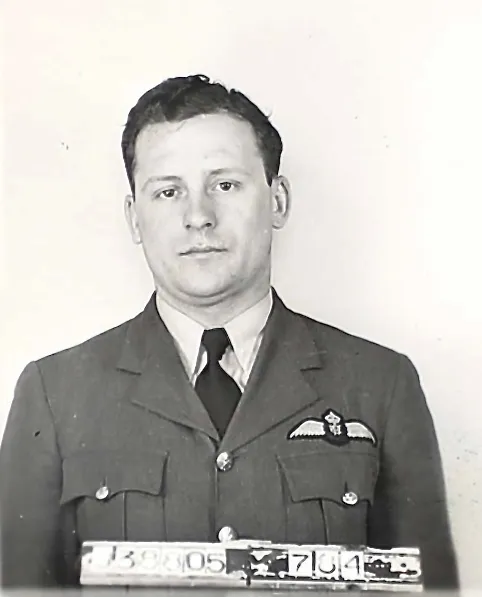

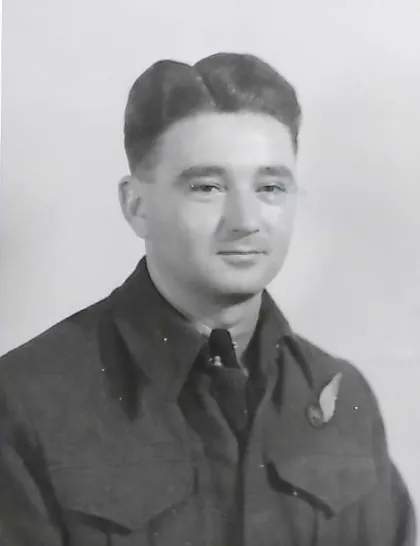
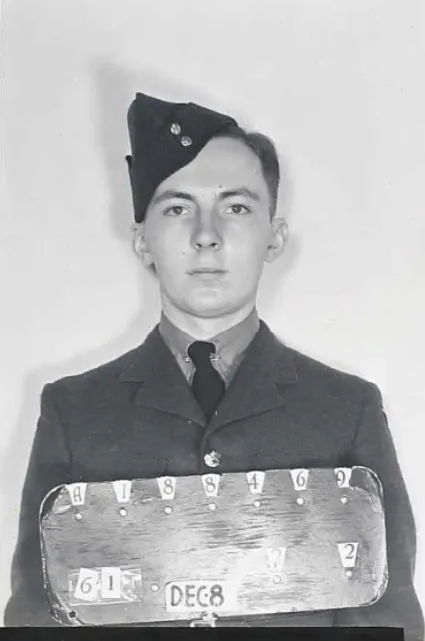
 Lancaster Bomber
Lancaster Bomber Wikipedia
Wikipedia